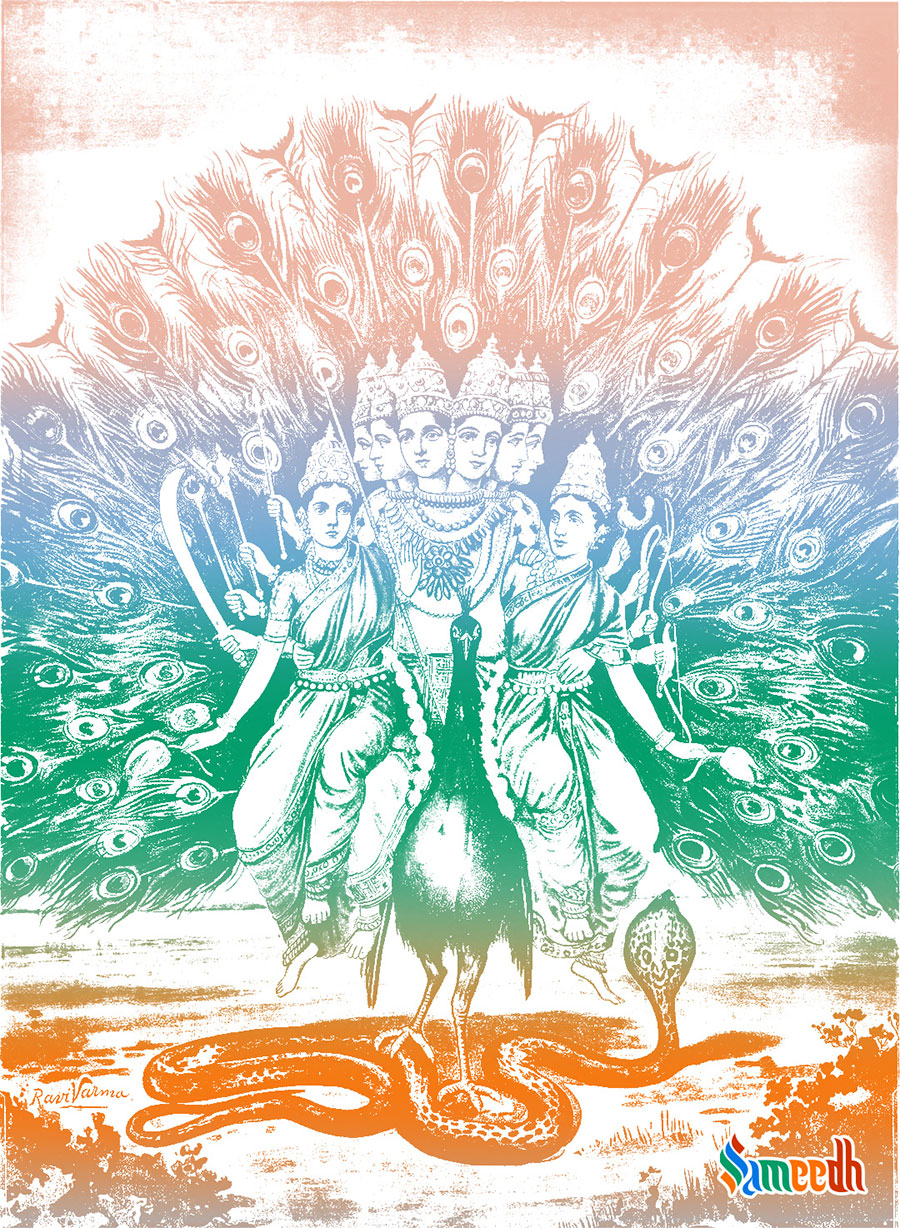Kartikey is the Hindu god of war, also known as Skanda & Murugan. He is the son of Parvati and Shiva, and the brother of Ganesha.

Kartikeya is the Hindu god of war, also known as Skanda, Kumara, Murugan, Shanmugha, and Subrahmanya. He is the son of Parvati and Shiva, the brother of Ganesha, and a Hindu god whose life narrative is told in many different ways. Kartikeya, who has been worshiped as Murugan in South India, Sri Lanka, Singapore, and Malaysia from ancient times, is a famous deity in the Indian subcontinent.
Kartikeya is a Hindu divinity that dates back to the Vedic period. He was an important deity in early Hinduism, according to archaeological evidence from the 1st century CE and earlier, when he was discovered with the Hindu god Agni (fire). He can be found in a number of medieval temples around India, including the Ellora Caves and Elephanta Caves.
Kartikeya’s iconography varies greatly; he is usually depicted as a perpetually youthful man riding or near an Indian peafowl called Paravani, decked with weaponry, and occasionally with a rooster emblem in the flag he holds. Most icons depict him as having only one head, but some depict him as having six, reflecting the tale surrounding his birth. He grew up swiftly, becoming a philosopher-warrior who defeated the demons Tarakasura, Simhamukha, and Surapadma, as well as teaching Shaiva Siddhanta religion and the pursuit of ethical life. Many poet-saints, like Arunagirinathar, have been inspired by him.
Life Story
The gods wanted Skanda to be born so that he might defeat the demons Taraka, Simhamukha, and Surapadma, who had been awarded a boon that he could only be killed by Shiva’s power. Parvati was brought to persuade Shiva to marry her. Shiva’s seed grew so potent after many years of abstinence that the gods, fearful of the outcome, dispatched Agni, the god of fire, to disrupt Shiva’s love play with Parvati. Skanda was born after Agni accepted the seed and dumped it into the Ganges.
Kartikeya signifies, “Of the Krittikas,” This name is also associated with his birth. Six of the seven brightest stars cluster in the night sky, known as Krittikas in Hindu literature, observe him once he arrives on the banks of the River Ganges (called the Pleiades). These six moms all wanted to look after him and nurse Kartikeya, the newborn. Kartikeya resolved the conflict by growing five additional heads, giving him a total of six heads, allowing him to look at each of his six moms and have each of them breastfeed one aspect of him. According to Tamil and Sanskrit tradition, he has 108 names.
Kartikeya is worshiped as a prominent deity in Tamil temples all over the world, particularly in the Tamil Nadu state of India, Sri Lanka, Mauritius, Indonesia, Malaysia, Singapore, South Africa, Canada, and Réunion. Three of Tamil Nadu’s six busiest temples are dedicated to him. Tamils, Sinhalese, and Veddas flock to the Kataragama temple in Sri Lanka, which is dedicated to him. In some regions of India, he is known as Skanda, although only in a minor status with Ganesha, Parvati, and Shiva.
Kartikeya’s iconography depicts him as a young God dressed as a warrior and wielding the Vel sword. It’s a holy spear, known as Shakti, that represents Kundalini shakti. He is sometimes pictured wielding a sword, a javelin, a mace, a discus, and a bow, but he is most commonly depicted wielding the sakti or spear. A peacock serves as his vahana (vehicle or ride). Depending on the locale or artist, he has one or six heads.